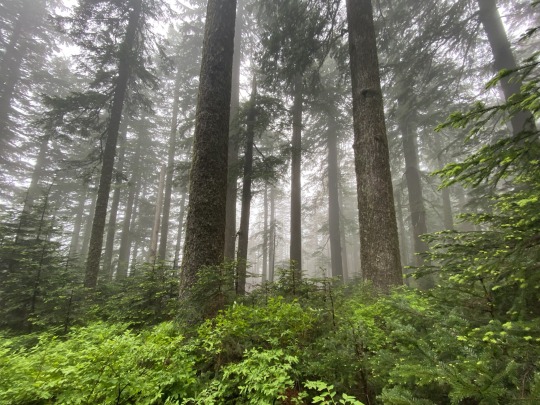#Western Hemlock
Text
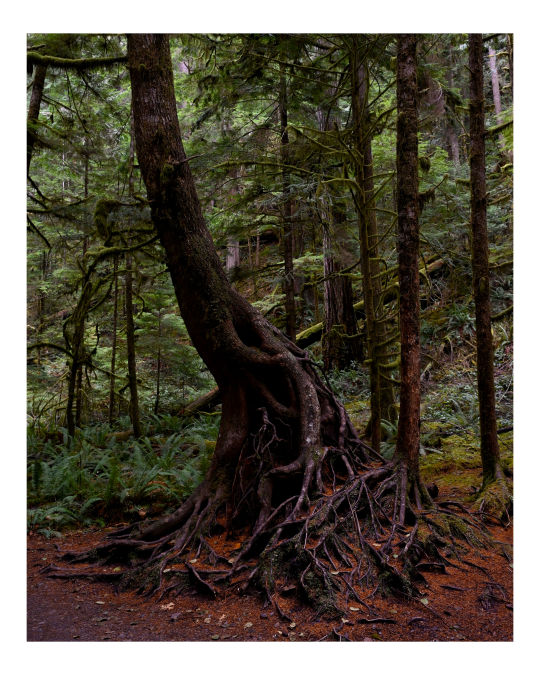
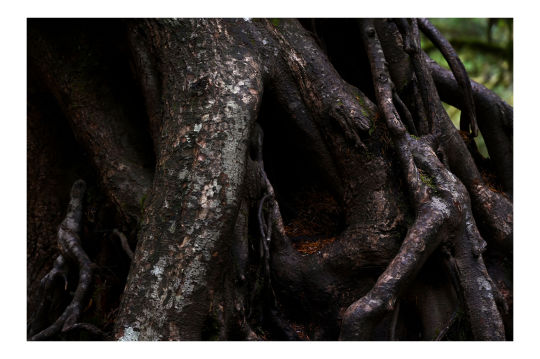
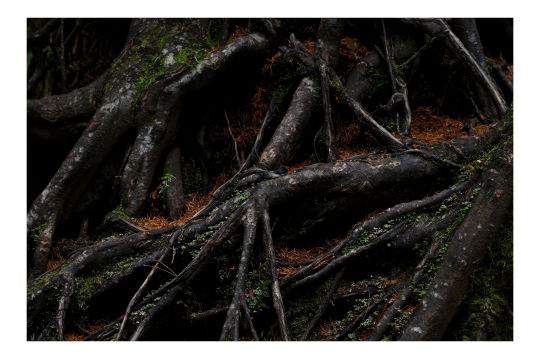
Intricate cascading roots on a Western Hemlock, Tsuga heterophylla.
Olympic National Park| 11-30-2023
#Western Hemlock#Tsuga#dendrophilia#forest#trees#forest floor#olympic peninsula#olympic national park#washington state#pnw#pacific northwest#nikon#pnw photography#original photographers
3K notes
·
View notes
Photo


beautiful details in a winter forest
Snoqualmie, Washington
#washington#35mm#film photography#analogue#western hemlock#pine#pine trees#mountains#PNW#pnwadventures#snowy mountain#hiking#flora#original photography#photographers on tumblr#nature photography#pacific northwest#moss#Lichen#foggy trees#foggy mountains#Foggy
3K notes
·
View notes
Text
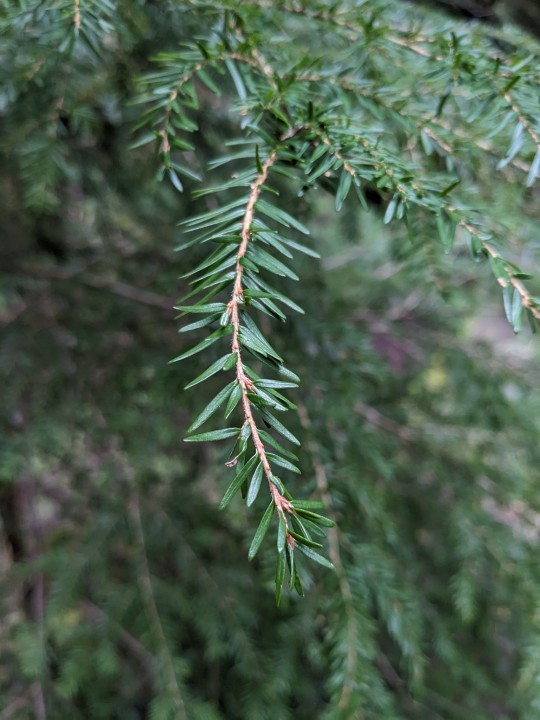

Tsuga heterophylla
16 notes
·
View notes
Text
Twin Firs trail is a short loop almost 2 miles down the road from Longmire. For the national park, this is a lower elevation trail. Warning, it does get snow during the winter. But, as Spring comes back around Twin Firs is one of the first to melt out. While not the meadows of the subalpine, the forest wildflowers peep out shyly here giving you small jewels of color for your Springtime hike.

And really what’s not to love about this little 0.4 mile loop. Just 1 mile or so up the road from Kautz Creek, you park at the pull-out on the north side of the road. The trail heads up the hillside almost immediately, taking you away from the road and into this wonderful forest.
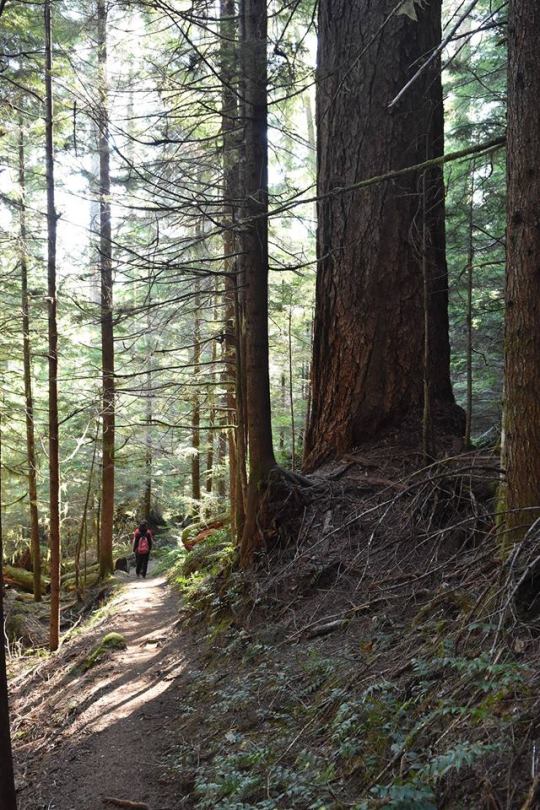
While the Twin Firs are no longer with us, this trail provides many gorgeous douglas-firs. And while you’re going up the hill and then down, you pass some lovely western hemlocks and western red cedars. Near the top of the loop, you cross a little creek. The peace and serenity are here can be wonderful.

Have you hike the Twin Firs trail? What is your favorite season for enjoying this little trail? How amazed were you by these amazing trees? ~ams

For more information on the trail, you can start with this webpage https://www.nps.gov/places/twin-firs-trailhead.htm . Check weather before hiking https://www.nps.gov/mora/planyourvisit/weather.htm. And please remember that tire chain requirements start November 1. For more information https://www.nps.gov/mora/planyourvisit/tire-chain-faq.htm .
These are not current photos but images from years past. NPS/Roundtree Photo. View from Twin Firs Trail looking up the trunks of some big trees. May, 2018. NPS/Roundtree Photo. Hiker on the dirt Twin Firs Trail beside tall trees. May, 2018. NPS/Spillane Photo. Creek tumbling down over rocks alongside fallen tree trunk. May, 2022. NPS/Spillane Photo. Violets blooming small yellow flowers along trail in May, 2022.
#encuentra tu parque#find your park#national parks#mount rainier#mount rainier national park#trees#hiking#trails#douglas fir#western red cedar#western hemlock
42 notes
·
View notes
Text
Two of my favorite western hemlock trees (Tsuga heterophylla) seen in this morning's lovely sunshine. I decided to experiment with creating more of a mood-based video, just for fun.
11 notes
·
View notes
Photo
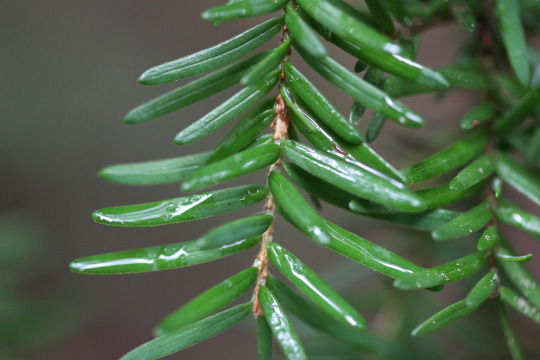
Young western hemlock branch
Tsuga heterophylla
While nearly identical to yew at this stage, you can tell the difference by looking at the branches; hemlock has needle-like leaves arranged in a spiral around the shoot, giving it a disarrayed look. Yew is in two orderly lines on either side. Don’t eat the yew berries, you’ll have a bad time before you die.
Eagle River Nature Park, Malakwa, BC
16 Sep 2022
3 notes
·
View notes
Photo
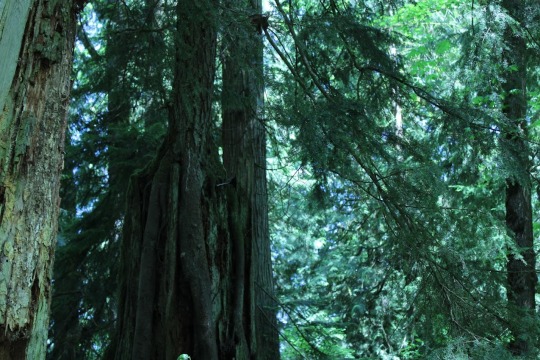
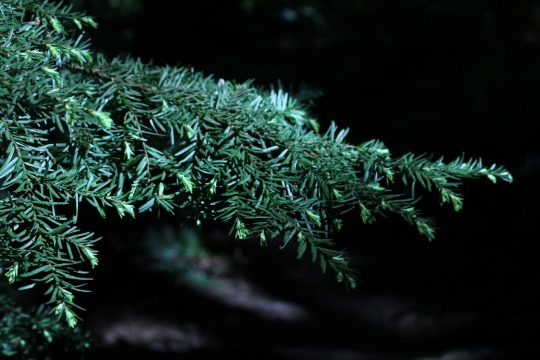
Tsuga heterophylla
5 notes
·
View notes
Note
For those living in the plains states, instead of a tree, may I recommend becoming able to identify a native grass?
Grasses might be a little harder for someone just starting out with plant ID, based on personal experience, but maybe you have a recommendation for one that's a little extra distinctive? Who knows, though; I live around trees, of course I find them easier to tell apart! Maybe folks in the plains states have an easier time with grasses than my PNW ass.
Shrubs/bushes/etc. are also a great place to start, imo. I just find that trees can be more interesting to ID, since you can see them from a distance.
#also- multiple distinct clues makes it easier imo!#I like to learn some basics about the bark + leaves/needles + branches + seeds all together#makes it easier to confirm I have the right ID and easier to tell things apart in the first place#and I'm more likely to remember a couple more details if I start with more details. like. statistically#also if you know what it's commonly confused with (that is also local) that can help#if you're in the PNW you might want to learn western hemlock and douglas fir at the same time so you can focus on how to tell the two apart#makes it easier to ID them both too- I think it kind of turns it into a game lol
32 notes
·
View notes
Text
Reflection Mondate
Snow. Slush. Mud. Water. Flurries. Wind. Sun. Clouds. They were all on today’s menu. It’s a March thing. And so we decided to embrace it and head to a spot we usually avoid this time of year.
Our destination was a country lane beside the Old Course of the Saco River in Fryeburg, Maine. During the winter, this road is part of the snowmobile system. In spring, summer, and fall, it sees a fair…

View On WordPress
#Fryeburg#Hemlock Bridge#Maine#Old Course Saco River#Roundhead Bush-clover#Roy Andrews#western Maine
1 note
·
View note
Photo

Tiny pine cone of Tsuga heterophylla or western hemlock
2 notes
·
View notes
Text
There's this idea, fairly common in society, that mental illness is for teens and up. Children are happy little creatures, generally, right? Sometimes they're abused and the trauma can make them mentally ill, but that's not common.
There are two fundamental problems with this attitude. One, it's incorrect to assume that trauma is the only reason a young kid can be mentally ill. Two, trauma is more common than people think. I'll be covering the first problem in this post through the lens of my particular experience.
Where I live, you can be diagnosed with bipolar disorder at 18 years old. You cannot be diagnosed with bipolar disorder as a minor. This poses a problem because my age of onset was in first grade, roughly six years old. Because of the fact that I was very young and new to the world, this was also the age of my first suicide attempt. Thinking I wouldn't be able to pass a spelling test genuinely felt like something worth trying to die over. So, I ate some hemlock, since I'd read about Socrates being killed with it. Luckily, I ate western hemlock, an unrelated species, and just felt kind of sick.
I'm not recounting that for fun or pity. I'm recounting it because children with mental illness are in genuine danger because they have little to no experience with managing their emotions, have little to no concept of the idea that their life can change and improve, and are dismissed by adults. I told a teacher that the test made me want to die, though not that I'd attempted to, and it was brushed off as little kid hyperbole. If I had used a method that was effective rather than one I thought would be, I would have been dead at six years old.
I would not receive medication that worked even a bit for another two years. I would not receive treatment for bipolar disorder specifically for ten years, and that required my PCP fudging the reason for the medication because she was afraid I would die if she didn't, and diagnosis was still two years off at minimum. I received a formal diagnosis at age 19, thirteen years after onset.
But surely that's uncommon, right? This story is a huge edge case, right? I actually have no idea, because age of onset and age of diagnosis are massively conflated for most disabilities. Policies like the one in my area that restricted bipolar diagnoses by age can artificially raise the age of "onset", in my case by thirteen years. The general idea that children are somehow immune to mental illness can also delay diagnosis by several years, perpetuating the idea that young children can't be mentally ill. The data on when people start experiencing mental illness is inherently skewed upwards, and I frankly don't have a good estimate on how bad that skew is. If anyone does have that data, please chime in.
Listen to children. If they're saying they're sad all the time, that they don't care about anything, that they don't see a future for themselves, those are signs of depressive symptoms. If they say that tests make them feel sick, that they can't do anything because they're scared, that they can't breathe and freeze up, those are signs of anxious symptoms. Many children talk about imaginary things, and that's just fine, but slip in a question or two about them to make sure that the kid is just playing, and not experiencing psychosis.
Children are new to the world and vulnerable, and they don't know what's normal and what isn't. They need people who are more experienced watching out for problems they might be having, and listening when they talk about having problems. If you can, try to be the person who perceives them, and tells them that things can be better.
5K notes
·
View notes
Text
Herb Guide to HRT for Warrior Cats
Have a warrior OC you would like to show being on hormone replacement medication? I’ve gone through herbs historically associated with femininity/masculinity, as well as those with effects on sex hormones, that a wild cat could hypothetically find and use.
Of course, this would still require a bit of a leap as there’s no herb in nature that can replace our friend Spironolactone... but if you’d like some herbs with a grain of truth or history to them that wouldn’t poison a semi-realistic cat? Here you go!
(DO NOT USE THESE HERBS ON YOURSELF OR A REAL ANIMAL.)
Let’s identify what we’re looking for;
Hormone suppressing herbs = antigonadotropins
Prevents production and recognition of present hormones. This is going to be big for an agender transition; but even in a binary one, they’re often taken with-
Hormone producing herbs = estrogen/estradiol & testosterone/androgens
Make sure your warrior doesn’t start on huge amounts! Smaller, controlled doses are more effective. Too much can cause the opposite effects and slow down transition.
Historical precedent = Just Cool
If I find a cool story I’m just going to include it, but note that it doesn’t hold pharmacological basis.
I considered also including some thoughts on surgical treatments as well, but I’ve decided I’ll save that for a follow-up. This guide is purely focused on medication to stay SFW!
Hormone Suppressants
Lycopus (also known as Wolf’s Foot, Water Horehound, Bugleweed) is such a widespread species and has several other medical uses. Not only is it THE most well documented antigonadotropin I came across, but its different species have a wide variety of medical use, including treating anxiety, heart palpitations, stopping bleeding, and respiratory illness. This is also a mint that is not toxic to cats. Also it can be used as a dye.
THERE IS A CAVEAT; if Lycopus supplements suddenly stop or overdosed, it can cause thyroid enlargement. Keep this in mind if your trans warrior ever gave up their medication to a sick clanmate in leafbare!
Lithospermum ruderale (Aka western Stoneseed or Lemonweed) has similar suppression properties, but only in American fanclans, and not as many secondary uses.
Comfrey ROOT can also be used for this purpose, in addition to its canonical uses (funfact this plant is also called knitbone). But can cause liver failure in high doses.
Rosemary suppresses feminine hormones in the uterus, for warriors going from Female to Male. Additionally, it’s an excellent antifungal, smells great, and can be used as a cooking spice.
Molly to Tom (Female to Male)
Pine Pollen (particularly from the Scots Pine), can be added to water or foods and increase testosterone.
Stinging Nettle ROOT could also be taken for a transmasc warrior. The above ground plant can be processed for use with allergies, but the relevant part here is the root underground, which has no stinging hairs.
Sarsparilla ROOT is historically associated with testosterone, though modern studies haven’t held up the claims... but, it is a plant an American clan would have access to, and is also used to make root beer.
Tom to Molly (Male to Female)
FENNEL?? AGAIN??? It’s true.
Through Fennel, all things are possible
It has estrogenic properties in all sexes and has been explored for the creation of synthetic estrogen since the 1930s. This can be used for a transgender warrior, as well as for a cisgender queen with a hormone issue. It must be remarked though; it looks alarmingly similar to poison hemlock, and should not be collected by untrained cats.
Hops (Humulus lupulus) is up next, but first I think this education is worthwhile; phytoestrogens aren’t exactly like true estrogens, but in high enough quantities (as in, much, much more than a plate of soybeans or a mug of beer) they can have estrogen-like affects.
Hops are the uncontested queen of these, and they grow wild in several continents. Hops can sometimes be toxic to cats, based on a genetic predisposition, and mostly to the ‘cone’ (female flower). For the best hormonal effect, the ‘flower‘ (male flower) would be dried and eaten.
Flax flowers don’t contain nearly as much phytoestrogen, but are safer for cats. Additionally, flax is extremely useful in construction, and can be used to make fabric or twine if your Clan is advanced enough.
#I don't have a DNI so here's the warning; If I see TERFs clowning on his post I will block on sight.#Trans rights#I'm as queer as a rainbow steer#transgender#Clan Herbs#Clan Culture#Warrior Cats#Fennelposting#I have no idea how Fennel ends up on every single one of these lists somehow#In love with Bugleweed btw#God it has SO many uses#Most of this was sourced from The Review Of Natural Products#The fifth edition specifically because that was the one I could find#The newest one is going for like 200$ jesus christ
1K notes
·
View notes
Text

Tree rings. Response of sitka spruce and western hemlock to commercial thinning. 1985. Cover art.
Internet Archive
646 notes
·
View notes
Note
Does Pixie like trees?
YES !! Pixie love trees so much ! Pixie like coastal redwood , giant sequoia , Western hemlock , bigleaf maple , Black cottonwood , Garry oak and so many others but not have any more on pixies AAC device .
95 notes
·
View notes
Text
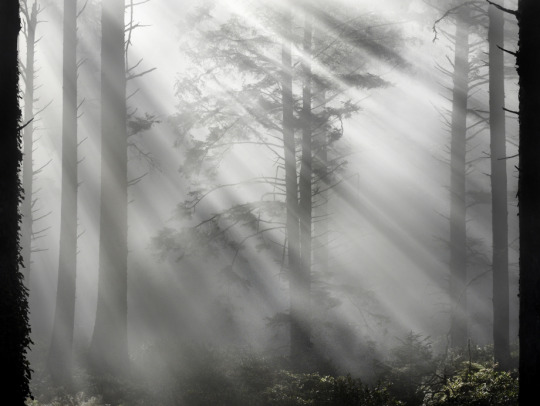
Sitka Spruce and Western Hemlock in Fog, Cape Lookout Beach, Oregon, Photo by James Baker
105 notes
·
View notes
